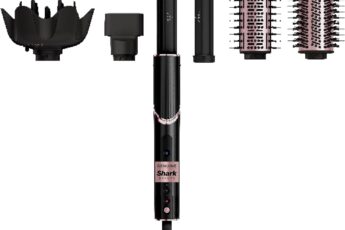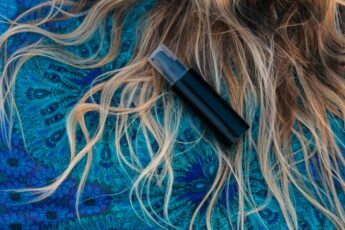Have you ever stood in front of the mirror, brushing your hair and thinking, “Why does my hair never seem to do what I want?” One week it feels dry, the next it looks greasy, and sometimes it just… sits there, refusing to cooperate. I’ve been there too. For the longest time, I blamed my shampoo, my conditioner, even the weather. But turns out, the real reason had nothing to do with the products themselves — it had everything to do with something called hair porosity levels.
Once I learned about porosity, everything started making sense. My hair wasn’t stubborn — it just needed to be treated differently.
Let’s talk about what that actually means because once you get it, you’ll understand your hair so much better.
Table of Contents
Key Takeaways
- Hair porosity levels show how your hair absorbs and keeps moisture.
- There are three main levels: low, medium, and high.
- You can test your porosity easily at home with water or a quick slip test.
- The right care depends on your level — light moisture for low, balance for medium, and sealing hydration for high.
- Understanding your porosity helps you choose better products and avoid frustration.
What Is Hair Porosity?
Think of hair porosity as how your hair drinks water. It’s basically how well your hair can absorb and hold onto moisture. Some hair drinks it up instantly and loses it just as fast. Some takes forever to absorb it but keeps it locked in.
When I first heard that, I laughed because it sounded like my hair was alive — but honestly, it kind of is. Each strand has tiny cuticles (like shingles on a roof). When they’re flat and tight, it’s hard for moisture to get in. When they’re lifted or open, moisture gets in easily but escapes just as quickly.
That’s what determines your hair porosity level — and why two people can use the exact same conditioner, but one ends up with soft, silky hair and the other just gets buildup and frustration.
The Three Hair Porosity Levels
Everyone’s hair fits into one of three porosity levels: low, medium, or high. Knowing which one you have can completely change how your hair behaves — and how you care for it.
Low Porosity Hair
If your hair feels like it takes forever to get wet in the shower, you probably have low porosity hair. The cuticles are tightly closed, so moisture and products struggle to get inside.
I used to have this exact issue. I’d apply conditioner and feel like it was just sitting on top of my hair, not doing anything. Then I’d rinse it out, and my hair would feel exactly the same — dry and slightly waxy.
Common signs:
- Water beads on your hair instead of soaking in.
- Products seem to “sit” on your hair rather than absorb.
- Your hair takes ages to dry.
How to care for it:
- Use gentle heat (like steam or a warm towel) to help open your cuticles before deep conditioning.
- Go for lighter products — water-based leave-ins and lightweight oils like argan or grapeseed.
- Avoid heavy butters or thick creams; they can cause buildup fast.
Once I started using steam while conditioning, it made a huge difference. My hair finally started to feel moisturized instead of coated.
Medium Porosity Hair
Medium porosity is the sweet spot — the balanced middle ground. The cuticles are slightly open, allowing moisture to enter and stay.
If your hair feels easy to style, holds curls well, and doesn’t get dry too fast, this might be you. This type tends to behave well with most products, which is probably why people with medium porosity hair sometimes think they’ve found “the perfect routine.”
Common signs:
- Your hair holds styles and moisture well.
- It doesn’t frizz too easily.
- You can air dry and still get a nice finish.
How to care for it:
- Keep doing what works, but don’t overdo protein treatments.
- Alternate between moisture and strengthening masks.
- Avoid too much heat — it can push your hair toward high porosity.
The key here is balance. Medium porosity hair can shift either way depending on how you treat it — too much heat or color can lift the cuticles, while too much product buildup can make it feel lower porosity.
High Porosity Hair
This is the hair that drinks everything up — fast. The cuticles are raised or damaged, so moisture gets in easily but escapes just as quickly.
If your hair gets frizzy the moment you step outside, dries super fast, or soaks up products like a sponge, you’re probably in this category.
Common signs:
- Hair dries very quickly after washing.
- Feels rough or dry even after conditioning.
- Prone to tangles and frizz.
- Often caused by color treatments or heat damage.
How to care for it:
- Use heavier creams and oils to help seal moisture in.
- Always deep condition regularly.
- Try a cool rinse after washing — it helps close the cuticles a bit.
- Layer products using the LOC method (liquid, oil, cream).
High porosity hair needs love, not frustration. I’ve seen people panic when they find out they have it, but it’s manageable — you just have to give it what it needs.
Also Read: Hair Porosity Test Methods: Simple Ways to Know What Your Hair Needs
How to Test Your Hair Porosity Level
There’s a super easy way to find out your porosity level — no fancy tools required.
The Float Test
Take a strand of clean, dry hair and drop it into a cup of water. Wait about five minutes.
- If it floats on top → low porosity.
- If it slowly sinks → medium.
- If it sinks right away → high porosity.
The Slip Test
Run your fingers up a strand of hair from tip to root.
- If it feels smooth → low porosity.
- If it feels slightly bumpy → medium.
- If it feels rough or uneven → high.
The Spray Test
Mist a small section of your hair with water.
- If the water sits on top → low porosity.
- If it absorbs slowly → medium.
- If it soaks in fast → high.
Don’t stress if your results feel unclear — most of us have mixed porosity across different areas of our head. That’s totally normal. My crown behaves differently from the back of my head, and it took me a while to figure that out.
Caring for Each Hair Porosity Level
Once you know your level, caring for your hair becomes so much easier. Let’s break it down.
For Low Porosity
- Use heat when deep conditioning.
- Avoid protein-heavy products.
- Clarify regularly to remove buildup.
- Stick with light oils and mists.
For Medium Porosity
- Keep a healthy balance of moisture and protein.
- Protect your hair from heat and harsh sun.
- Don’t overload it with heavy oils.
For High Porosity
- Use leave-ins and rich creams to lock in moisture.
- Limit heat and chemical treatments.
- Try apple cider vinegar rinses — they help smooth cuticles.
- Seal with oils after moisturizing.
One of my favorite tips? Use a satin or silk pillowcase. It keeps moisture from escaping overnight, no matter your porosity level.
Common Mistakes People Make
Here’s where a lot of us go wrong — and I say “us” because I’ve made every single one of these mistakes.
- Using the wrong products for your porosity. Heavy creams on low porosity hair just sit there. Lightweight sprays on high porosity hair don’t last.
- Ignoring your hair’s changes. Porosity can shift over time from heat, color, or even weather.
- Overdoing protein. More isn’t always better — too much can make your hair stiff.
- Not rinsing properly. Sometimes dryness isn’t from lack of moisture but leftover buildup.
I used to slather oils on my hair thinking it’d fix my frizz. It didn’t. It just made my hair greasy. Once I started understanding porosity, I realized my hair didn’t need more oil — it needed moisture to actually stay in.
Check Out: Best Products For Low-Porosity Hair: Reviews Of All Our Favorites
Why Understanding Hair Porosity Levels Matters
Knowing your hair porosity level doesn’t just help you pick the right shampoo or mask. It helps you stop guessing. It makes your routine make sense.
It’s like when you finally figure out your skin type — suddenly, everything clicks. You stop blaming every product, and instead, you start listening to what your hair’s been trying to tell you all along.
And honestly? It’s a small act of self-care. Paying attention to your hair, understanding its needs — that’s a way of showing yourself patience and kindness.
Conclusion
Understanding your hair porosity levels might feel small, but it’s one of those things that changes everything once you know it. You stop fighting your hair and start working with it.
The moment I stopped forcing my routine to fit what everyone else was doing and started paying attention to my own hair, it began to thrive. Yours will too.
Sometimes all your hair needs is for you to listen — and knowing your porosity is how you start doing that.
Frequently Asked Questions
Can my hair porosity level change over time?
Yes, it can. Things like coloring, bleaching, or heat styling can make your hair more porous. On the other hand, deep conditioning and gentle care can improve it over time.
Is high porosity hair always damaged?
Not always. Some people are naturally born with more open cuticles. But yes, damage can increase porosity, so be gentle with heat and chemicals.
How often should I test my hair porosity?
You don’t need to do it often — maybe every few months or after big changes, like dyeing your hair.
What if my hair seems to have mixed porosity?
That’s common. Just treat each section as it behaves. You might need heavier products on the ends and lighter ones near the roots.



